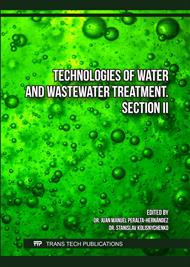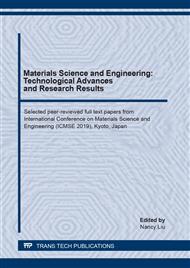p.18
p.24
p.31
p.39
p.47
p.57
p.65
p.76
p.85
Research on the Feasibility of Concrete Incorporating Water Purification Sludge
Abstract:
This study aims to develop the mix proportion of concrete incorporating water purification sludge (WPS), as parts of fine aggregate and consequently investigate its mechanical properties and durability. The experiments involve three sludges from Da-Nan, Lin-Nei and Nan-Hua water treatment plants in Taiwan. In addition to the control mixture without WPS, four replacement levels of 20%, 40%, 60% and 80% of fine aggregate were selected for preparing the concrete mixture. The concretes tested were designed to have three target compressive strengths of 14MPa, 18MPa and 21MPa. Test results show that the compressive strengths of the Da-Nan and Lin-Nei WPS concretes meet the design requirements, and the strength of the Nan-Hua WPS concrete is lower to be only suitable for application in low strength concretes. The shrinkage deformation of the Da-Nan and Lin-Nei WPS concretes increase with the increase of sludge replacement level, however, the shrinkage deformation decreases with the increase of the compressive strength of concrete. If the sludge replacement ratio is less than 40%, its effect on the compressive strength of the Da-Nan and Lin-Nei WPSs concrete is limited whether they are cured in water or in the air.
Info:
Periodical:
Pages:
47-56
Citation:
Online since:
August 2020
Authors:
Price:
Сopyright:
© 2020 Trans Tech Publications Ltd. All Rights Reserved
Share:
Citation:



